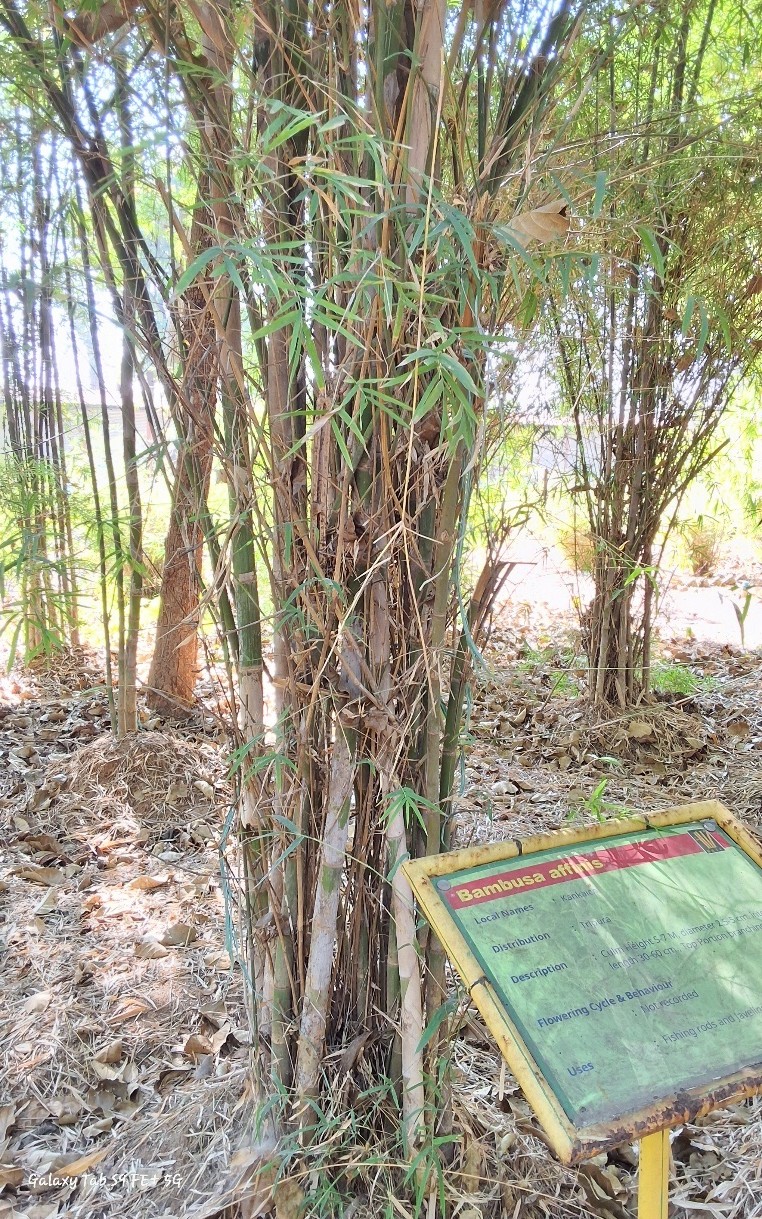Bambusa Affinis

Bambusa Affinis
Bambusa affinis, commonly known as Small Bamboo or Graceful Bamboo, belongs to the family Poaceae, widely recognized as the grass family. This species is primarily found in Southeast Asia and parts of India, thriving in subtropical and tropical climates.
This medium-sized bamboo typically grows to a height of 6 to 12 meters, with culm diameters ranging from 2 to 5 cm. The internodes measure 20 to 40 cm in length and are thin-walled but flexible. The culms are straight and slender, often green when young, turning yellowish as they mature. Its graceful appearance and compact size make it a favored choice for ornamental purposes and small-scale applications.
Ecologically, Bambusa affinis plays a vital role in stabilizing soil, particularly in hilly regions. Its dense clump-forming growth habit prevents soil erosion and enhances the surrounding habitat by providing shelter and food for various species of wildlife. This bamboo also contributes to carbon sequestration, aiding in mitigating climate change impacts.
In regions where it is cultivated, Bambusa affinis holds both economic and cultural significance. Its slender culms are widely used for making handicrafts, baskets, mats, and light furniture. Additionally, it is popular in landscaping and gardening due to its attractive growth pattern and adaptability to various conditions.
Bambusa affinis thrives in well-drained sandy or loamy soils, with a pH range of 5.5 to 7.5. It prefers areas with moderate to high rainfall, typically between 1500 and 2500 mm annually, and grows well in altitudes ranging from sea level to 1000 meters. This bamboo species is moderately drought-resistant and can tolerate short periods of dry conditions, although it prefers humid climates.
Propagation of Bambusa affinis is commonly achieved through rhizome or culm cuttings, which are the preferred methods for maintaining its desirable traits. It can also be propagated through seeds, but seed production is infrequent due to its long flowering cycle.
As with many bamboos, Bambusa affinis is monocarpic, meaning it flowers only once in its lifetime before dying. Its flowering cycle typically spans 40-60 years, and during this period, the clumps produce seeds in abundance. Sporadic flowering is rare, but when it occurs, it is usually localized.
Bambusa affinis, with its graceful appearance and functional versatility, is a valuable species for both ecological restoration and economic use. Its ability to thrive in various conditions and contribute to sustainable livelihoods underscores its importance in bamboo cultivation and conservation initiatives.
Listen Audio:
Need assistance? BRTC Faculty